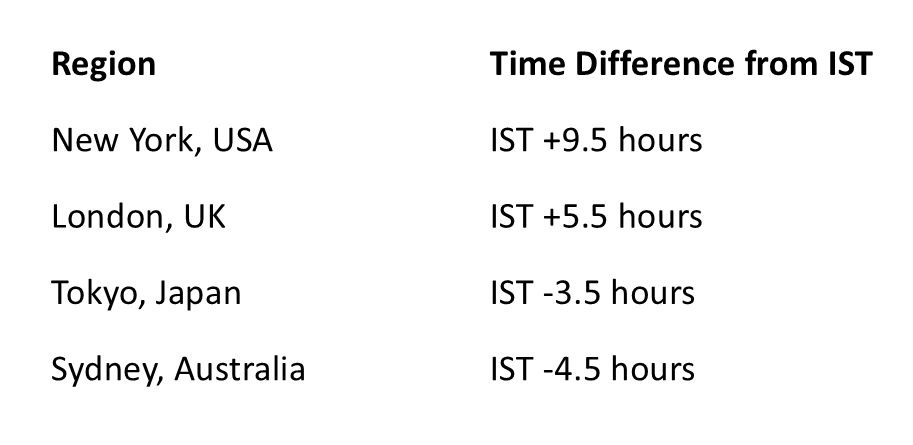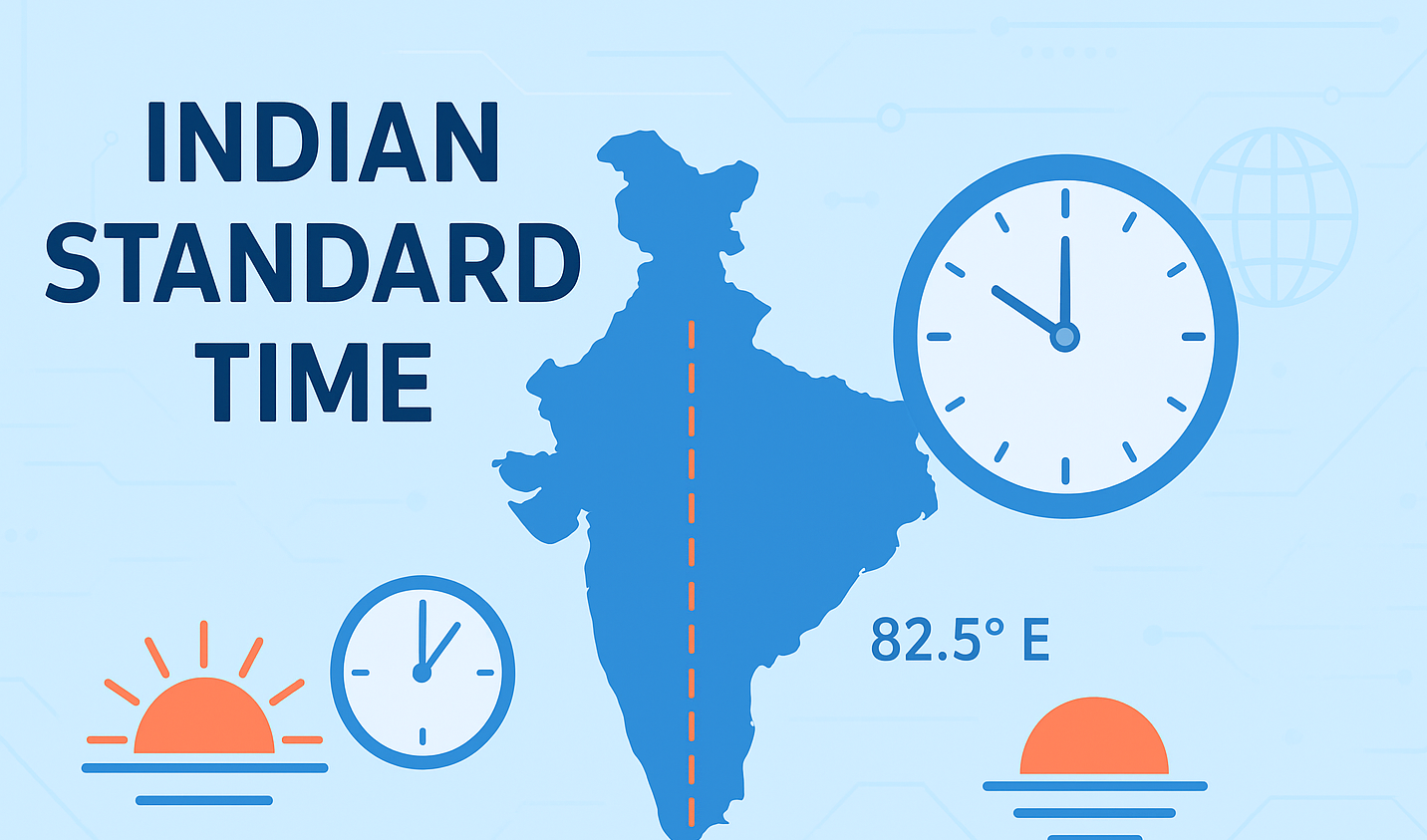Table of Contents
ToggleIntroduction
Indian Standard Time (IST) is a very important part of life in India. India is a huge country that goes from east to west for more than 2,933 kilometers. There is only one time zone, which is called IST. This one-time system has made things easier to administer, but it has also led to battles about differences across regions and requests for more than one time zone. People who do business with India, whether they reside there or not, need to know where IST is, where it comes from, and what it means.
What is the meaning of Indian Standard Time?
India and Sri Lanka use Indian Standard Time (IST) as their time. UTC+5:30 is 5 hours and 30 minutes ahead of IST. When it is midnight in Greenwich Mean Time (GMT), it is 5:30 AM in India. India is the only country with one time zone, despite spanning almost 30° of longitude.
IST’s history
Before IST, Indian cities used local solar time. The time in each city was dependent on when the sun rose and set. But when the British built railroads, telegraphs, and postal services, it was necessary to stick to a schedule.
The International Meridian Conference in 1884 made Greenwich Mean Time (GMT) the world’s standard time.
The British Indian government started IST in 1905, using 82.5° east longitude as a starting point. This line is close to Mirzapur in Uttar Pradesh.
Every day, the National Physical Laboratory in New Delhi updates IST. This makes sure that the whole country is at a high level.
Where does IST go in respect of its location?
The middle of India is crossed by the 82.5° east longitude line that IST is based on. This meridian goes through a lot of important places:
- Mirzapur, Uttar Pradesh, is where IST officially begins.
- The IST meridian is not too far from Jhansi, Madhya Pradesh.
- This line of longitude runs through Ranchi, Jharkhand.
IST is set along this meridian, which makes India a central point of reference. But in regions far to the east or west, the sun rises and sets at different times of the day.
How IST Affects Life in India
Using only one time zone has its pros and cons:
- Pros: There is a single national schedule, which means that all businesses, government agencies, and news outlets in the country work at the same time.
Ease of Administration: It’s easier to run things when you don’t have to deal with multiple time zones.
- The sun rises as early as 4:30 AM and sets as late as 4:30 PM in the eastern states. It can be challenging to get things done when this happens.
- In Gujarat and Rajasthan, the sun may set between 7:30 and 8:00 PM, which means it loses daylight and needs extra energy.
Many people are wondering about whether India should have more than one time zone to make the most of the day because of these differences.
Why India Needs More Than One Time Zone
India is around 30° wide in longitude, which means it covers two standard meridians. This means that IST and solar time are not the same in the east and west. People that want more than one time zone say:
Energy Efficiency: Moving the clocks forward might mean that states in the east don’t need as much artificial light.
Better Productivity: You might get more done if you work all day.
Convenience for the Region: Schools and businesses might open and close at times that make more sense.
But some who are against it think it could lead to problems:
Hard to Handle: Having more than one time zone can make it harder to run things and talk to each other.
Transportation and Broadcasting: To make train, airline, and media timetables work together, changes would have to be made, which could cause confusion.
The Indian government only has one IST right now to keep the country together and make things run more smoothly.
IST in Global Context
Understanding IST’s relationship with other countries is essential for international communication and trade:

IST and Tech
People in India can easily use IST through technology:
- Smartphones, laptops, and GPS systems switch to IST by themselves.
- Transportation: Indian Railways and airlines rigorously follow IST to keep everything in the country in sync.
- People in India who go to online classes, webinars, and meetings all use IST as a guide.
How IST changes culture and society
Indian culture, way of life, and customs change over time:
- Religious Observances: In IST, there are many prayers and celebrations that happen when the sun rises and sets.
- TV shows, news broadcasts, and streaming services all follow IST when it comes to media and entertainment.
- IST is the time zone for government holidays and national holidays. This helps things go smoothly all around the country.
IST and operating a business
Having just one time zone has a number of effects on businesses:
- The Indian stock markets are open from 9:15 AM IST to 3:30 PM IST. The schedule is the same for every part of the country.
- International Trade: When companies talk to partners in other countries, they have to shift IST to the time in their own country.
- Remote deal: Freelancers who work with clients in Europe or the US have to organize their work around IST, which takes a lot of time.
Last thoughts
The Standard for India Time is more than simply a tool to tell the time; it also stands for India’s unity and decent government. There are still problems in regions where work hours and daylight hours don’t match up, but things are more stable with just one time zone. The conversation about having more than one time zone highlights how vital it is to achieve a balance between making things easy for people, saving energy, and getting things done quickly. People and businesses can better grasp India’s unique time zone arrangement if they know what IST is and where it goes.
Frequently Asked Questions (FAQ)
1. Where does IST go in India?
Mirzapur, Jhansi, and Ranchi are all on the IST line. It is 82.5 degrees east of the equator. It is the most important place in the country.
2. Why do people in India demand more than one time zone?
People want more than one time zone so they can make the most of the light and energy. In the east, the sun rises early, while in the west, it sets late.
3. Does India change the time for Daylight Saving Time?
No, India stays on IST all year and doesn’t adjust it for the seasons.
4. What impact does IST have on businesses all around the world?
Companies from other countries who work with Indian clients or partners need to be able to reliably convert IST so they can negotiate transactions, set up meetings, and meet deadlines.
5. What issues can arise due to the numerous time zones?
Multiple time zones could help people save energy and get more done, but they could also complicate government work, transport schedules, and communication across the country.

Avinash Jaiswal is the Founder and CEO of Vidya Planet, holds a B.Sc. (Hons.), and is pursuing LL.B. (Hons.). His diverse academic background in science and law inspired him to create Vidya Planet with a vision to make education clear, reliable, and accessible for all learners.


